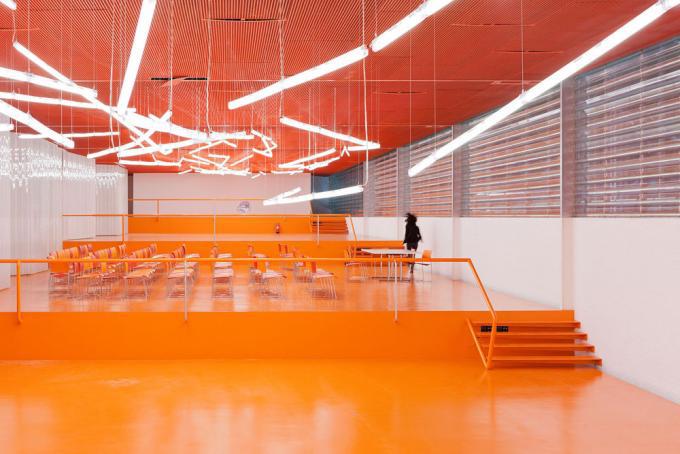The Vital Role of Flooring in Hospitals: Ensuring Safety and Efficiency

Flooring Solutions for University Facilities: Enhancing Safety, Sustainability, and Student Experience
July 31, 2023Hospitals are places of healing, hope, and care, and it is essential for these facilities to operate seamlessly to provide the best possible patient experience. While healthcare professionals and cutting-edge medical equipment are crucial components of any hospital, there is an often-overlooked aspect that plays a significant role in ensuring the facility’s safety and efficiency – the flooring. In this blog post, we will explore the importance of flooring in hospitals and how it impacts patient care, staff well-being, and the overall functioning of the medical facility.
Safety First: The Impact of Flooring on Patient Well-being
When it comes to hospitals, patient safety is of paramount importance. The flooring plays a critical role in preventing slips, trips, and falls, which are common accidents in healthcare settings. Hospitals experience high foot traffic, including individuals with mobility challenges, the elderly, and medical personnel constantly on the move. Choosing the right flooring material and maintaining it adequately helps reduce the risk of accidents and ensures patients and visitors can navigate the facility safely.
Maintaining a Sterile Environment: Flooring and Infection Control
Infection control is a top priority in hospitals to prevent the spread of diseases and maintain a sterile environment. The choice of flooring material can significantly impact the ease of cleaning and disinfection. Impermeable and non-porous flooring surfaces, such as vinyl or linoleum, are preferred in areas like operating rooms and critical care units, where cleanliness is paramount. Facility managers must ensure that the flooring can withstand harsh cleaning chemicals without compromising its integrity.
Comfort for Patients and Staff
Patients in hospitals often spend extended periods lying or sitting in bed, making comfort a vital consideration. Properly chosen flooring can improve the overall comfort level for patients and even staff. For instance, rubber or vinyl flooring in patient rooms can provide a more comfortable surface for patients to walk on and can help reduce the impact on joints for healthcare professionals who spend long hours on their feet.
Noise Reduction: Enhancing Healing Environments
Hospitals can be noisy environments, with constant foot traffic and medical equipment operating at all hours. Facility managers must consider acoustic properties when selecting flooring materials to reduce noise levels and create a calmer, healing atmosphere for patients. Installing sound-absorbing flooring in high-traffic areas or patient rooms can significantly contribute to a quieter environment, promoting rest and recovery.
Durability and Longevity: Cost-Effective Flooring Solutions
Hospitals are busy places with heavy equipment, stretchers, and wheelchairs constantly in use. The flooring needs to withstand substantial wear and tear to avoid frequent replacements, which can be costly and disrupt hospital operations. Investing in durable flooring materials, such as luxury vinyl tile or epoxy coatings, can offer long-lasting solutions that save on maintenance and replacement expenses over time.
In conclusion, flooring may not be the first thing that comes to mind when considering the elements crucial to a hospital’s success, but its significance cannot be underestimated. The right flooring choices impact patient safety, infection control, comfort, noise levels, and overall efficiency in the hospital setting. Facility managers must carefully select appropriate materials and ensure proper maintenance to create a safe and healing environment for patients and a conducive workspace for medical staff.
By prioritizing the importance of flooring and its role in healthcare settings, hospitals can ensure they are providing the best possible care for patients while also optimizing their operational efficiency and long-term sustainability.



